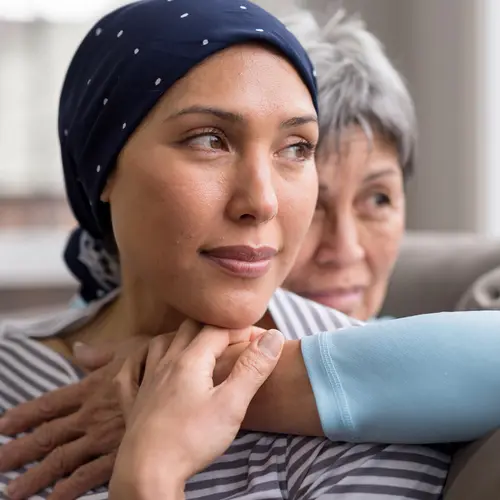What Are Fibroadenomas?
A fibroadenoma is a benign, or noncancerous, breast lump. Unlike a breast cancer, which can spread over time outside your breast, a fibroadenoma remains in your breast tissue.
The average size of a fibroadenoma is about 1 inch. It can grow larger with time. Usually it feels like a marble that easily moves around beneath your skin. The borders are smooth and the lump feels firm or rubbery. In some cases, though, you won't be able to feel it at all.
What Are the Symptoms of Fibroadenomas?
A fibroadenoma often has no symptoms. Or it may feel a little tender shortly before your period. You might experience more fibroadenoma pain if your lump is larger.
Fibroadenoma Causes
Doctors don't know what causes fibroadenomas. They may be related to changing levels of the hormone estrogen. They often grow during pregnancy when your estrogen levels are high, and shrink when your estrogen levels drop after menopause.
Types of Fibroadenomas
There are a few different kinds of fibroadenomas:
Simple fibroadenomas are small and the cells look the same under a microscope.
Complex fibroadenomas are bigger and tend to affect woman over age 35. They might have calcifications, which are small bits of calcium, or cysts, which are fluid-filled sacs.
Giant fibroadenomas can be larger than 2 inches.
Juvenile fibroadenomas develop in children and adolescents between the ages of 10 and 18. They are rare.
Can fibroadenomas turn into cancer?
Fibroadenomas and other benign breast lumps won't turn into cancer. But it is possible that complex fibroadenomas could slightly increase your risk of breast cancer in the future.
Who Gets Them?
Fibroadenomas are common. Up to 10% of women have one of these breast lumps, often without ever knowing. They most often appear between the ages of 15 and 35, but anyone who menstruates (has a period) can get one. After menopause, they become much less common.
How Are Fibroadenomas Diagnosed?
If you find a lump in your breast, you should see your doctor. You can't tell for sure what it is by how it feels.
Your doctor will likely feel the lump so they can learn more about its texture and size. Even if they think it might be a fibroadenoma, they may recommend that you get more tests to confirm it.
You may get an ultrasound or a mammogram, depending on your age and whether you're pregnant. Both are quick scans that you'll get in the doctor's office.
A radiologist will then check the images of your breast tissue to see if it's a fibroadenoma or something else.
The only way for a doctor to know for sure that it's a fibroadenoma is through a biopsy, which means taking a sample of the lump to test in a lab. Based on the results of your examination and scan, your doctor will decide whether they need to get extra confirmation from a biopsy. To do a biopsy, a doctor will insert a thin needle into your breast and pull out a small sample from the lump.
Fibroadenoma Treatment
You might not need any treatment. If your fibroadenoma is small, your doctor may recommend simply waiting to see whether the lump grows or shrinks rather than trying to remove it right away.
Similarly, if you get a fibroadenoma during pregnancy or while breastfeeding, your doctor might wait until your hormone levels return to normal to see if the lump disappears on its own.
If you've had more than one fibroadenoma removed in the past, and tests confirmed that that's what they were, your doctor also may delay removing any new lumps.
Fibroadenoma surgery
If your fibroadenoma gets larger, the doctor suspects that it might, or they aren't sure whether a lump is a fibroadenoma or not, they'll likely recommend removing it. This will help confirm that a lump isn't cancer and that it doesn't grow and affect the surrounding breast tissue.
Fibroadenoma removal is done in two ways:
Lumpectomy: This is a short surgery in which the doctor makes a small incision and removes the lump.
Cryoablation: The doctor uses an ultrasound machine to see your fibroadenoma. They'll hold a tool called a cryoprobe against your skin. It uses a gas to freeze the nearby tissue, which destroys the fibroadenoma without surgery. This method is less common.
Follow-Up Care
You likely won't need anything beyond routine screening tests after your fibroadenoma is diagnosed. This is true whether or not you have it removed. You'll continue to get any breast changes checked out by a doctor.
Having a simple fibroadenoma may raise your risk of breast cancer, compared with women without fibroadenomas. But if you had a fibroadenoma that was complex, it might mean a slightly higher risk of breast cancer later on. Unless you have other things that make breast cancer more likely, like close family members with the disease, your odds are still low.
Either way, keep up with your regular checkups, and ask your doctor which screening tests you need and when.

